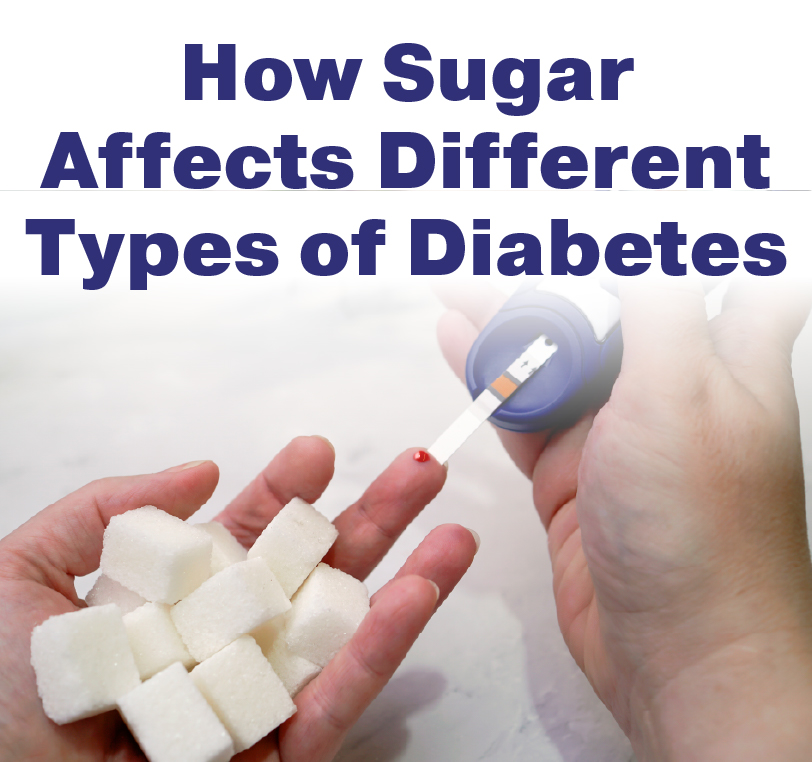How Sugar Affects Diabetes: Type 1 & Type 2 Blood Sugar Guide
How Sugar Affects Different Types of Diabetes
‘Sugar’ is a tricky topic for anyone with diabetes. While the idea that “sugar causes diabetes” is oversimplified, understanding how sugar affects diabetes is crucial for managing blood glucose and overall health. Not all sugars are created equal, and their effects vary depending on the type of diabetes.
Understanding Diabetes
Diabetes is a condition where the body struggles to regulate blood sugar. Type 1 diabetes occurs when the immune system attacks insulin-producing cells, leaving the body unable to manage sugar effectively. Type 2 diabetes, on the other hand, develops when the body becomes resistant to insulin, often linked to lifestyle factors like diet and weight. Each type responds differently to sugar intake, making personalised management essential.
Sugar and Blood Glucose
When we consume sugar, it breaks down into glucose, raising blood sugar levels. For people with diabetes, this spike can be risky if not carefully managed. Distinguishing between natural and added sugars is key. Natural sugar in fruits and vegetables has fibers and nutrients that slow down glucose absorption. Added sugars, like those in soda, sweets, and processed food, cause a rapid spike in blood glucose and contribute to complications over time. Understanding this distinction is critical for a diabetes diet.
Sugar and Type 1 Diabetes
For those with Type 1 diabetes, sugar does not cause the disease, but it affects daily blood sugar control. Insulin therapy allows flexibility, but excessive sugar can still lead to dangerous highs and lows. Tracking intake and balancing sugar with insulin doses is essential. Small amounts of natural sugar are generally safe, but added sugars should be limited to maintain stable glucose levels.
Sugar and Type 2 Diabetes
In Type 2 diabetes, sugar has a more direct role in blood sugar spikes and insulin resistance. High consumption of added sugar can worsen insulin resistance, making it harder to manage diabetes. Reducing sugar intake, pairing carbs with protein and fiber, and emphasising whole foods are proven strategies for maintaining healthy blood glucose. This approach forms the backbone of an effective diabetes diet.
Natural vs Added Sugar for Diabetes
Not all sugars are off-limits. Natural sugars in fruits, vegetables, and dairy are generally safe when consumed in moderation because they contain nutrients and fiber. Added sugars, however, provide calories without benefits and should be avoided. Reading labels and choosing minimally processed foods helps diabetics control blood sugar without feeling deprived.
Recommended Tests for Diabetes and Precautions to be Taken
If you notice symptoms like frequent thirst, constant fatigue, blurry vision, or slow-healing wounds, consider checking your blood sugar. Even without symptoms, adults over 35 or those with risk factors such as family history, obesity, or a sedentary lifestyle should get tested every 1–3 years for early detection.
Common tests include a fasting blood sugar test, an oral glucose tolerance test, and the HbA1c test, which shows average blood sugar levels over 2–3 months. These are simple tests, blood tests usually done at a clinic or diagnostic centre. For those already diagnosed, regular testing helps monitor how sugar and diet affect blood glucose.
Some tests require fasting, while others don’t. Avoid intense exercise or sugary meals beforehand, as these can skew results. Keeping a log of meals, medications, and readings will also help doctors fine-tune your diabetes diet and treatment plan.
